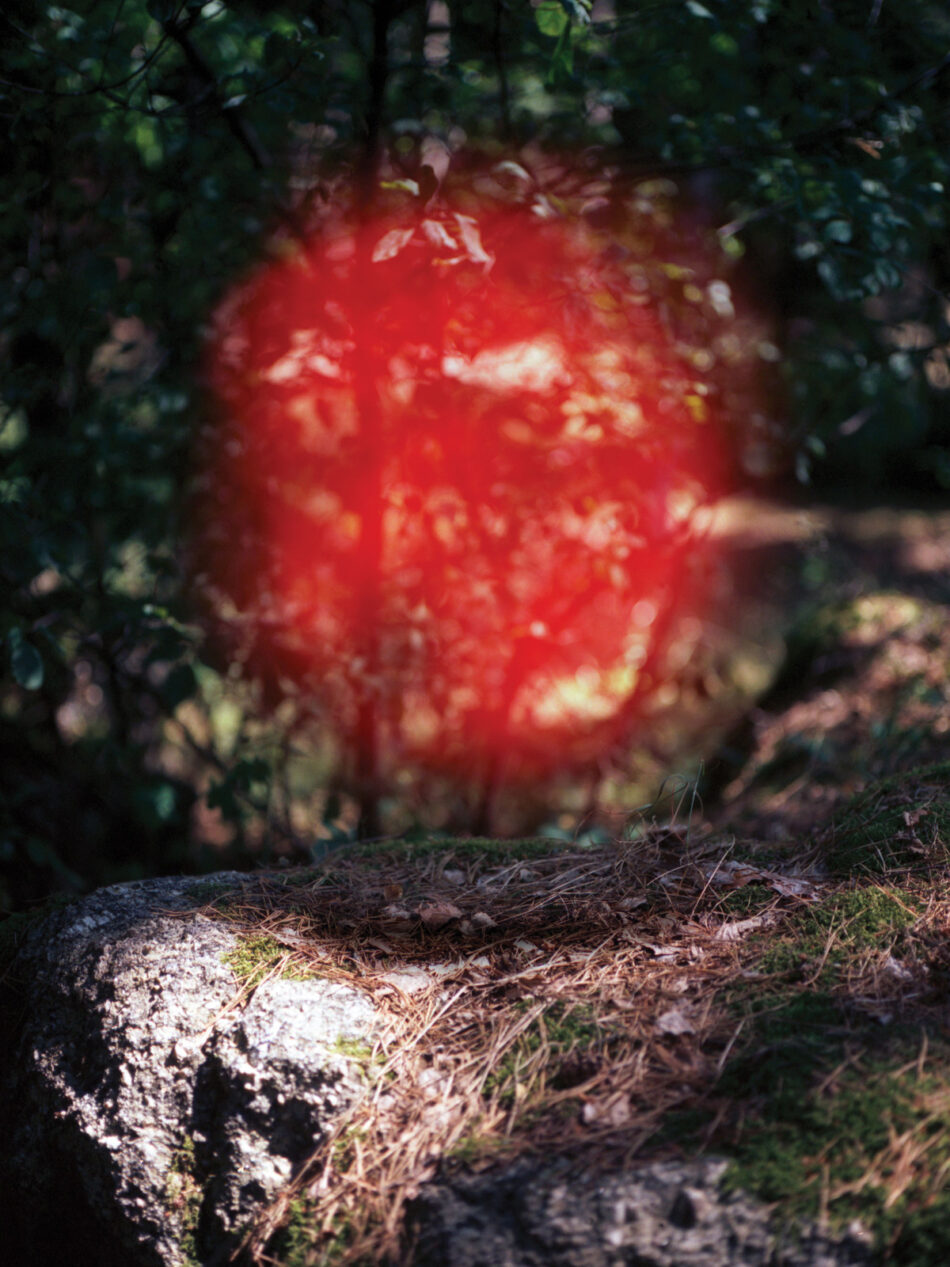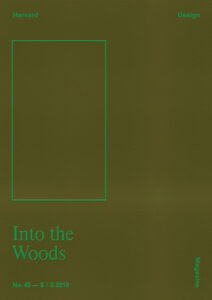In it.
The needle skipped the groove of the present. Into this dark forest you have already turned.
— Timothy Morton, Dark Ecology (2016)
“Anytime you need a break, we’ll be here,” the website promised. A couple of days at Getaway, a cabin retreat in rural New Hampshire, would leave me “relaxed and ready to head back into the world.” So, into the woods I went—a gently groomed, 40-acre woods offering a readymade nature immersion for city people who want to “unplug.” My cabin, “Cecilia,” was charmingly equipped with packets of Chia cereal; an electric compost toilet; a cell-phone lockbox; a handbook with tips on meditation, knot tying, and encounters with bears; a campfire-building kit (with wood for $3 a log); and a lightly used copy of Henry David Thoreau’s Walden. I was all set for a weekend of “living deliberately.”
What Getaway and other minimalist resorts so cleverly package and sell isn’t just the experience of woods as place, but the romanticized notion of woods as a nonurban place; an entity separate from, and opposed to, the city—even the world; an eternal refuge that can smoothly be entered and exited, gone into and back out of. But how much of our woods still remains to go into—and on what terms? Where are the boundaries—in space, time, and imagination—of the Earth’s wooded territories?

To go “into the woods” is to enter both nightmare and wonderment, chaos and serenity. The woods are the threatening realm of wolves and witches, yet also a space of peace and introspection. They confound and illuminate, disorient and clarify, endanger and protect. The woods are where we “come to our senses,” and where we embrace our wilder selves. They are a space of complex life forms and ecological destruction; of growth and decay; of fantasy and ritual; of secrets and control; of hiding and the hidden.
As designers, we encounter the woods as building site, as obstacle, and as resource—territory to be cleared, but also to be preserved, cultivated, tamed, or simulated. Wood itself—along with its products like lumber, wood pulp, silvichemicals, and charcoal—fuel the building industry and feed architecture. In a period of accelerated climate change, the planet’s woods are disappearing, burning up, threatening and threatened by human existence. How can we holistically address the woods and its ecosystems, and the life and life-giving power they contain?
This issue of Harvard Design Magazine treks into the woods to come to terms with its precarious status as habitat and resource, and to challenge assumptions about wood as material. We won’t be “out of the woods”—this looping conundrum—any time soon, even if the woods as we once knew it, and might still imagine it, has ceased to exist. At the intersection of wilderness, urbanization, and myth, “Into the Woods” embraces contradiction, challenges destruction, and revisits our roots, biological and architectural alike.
